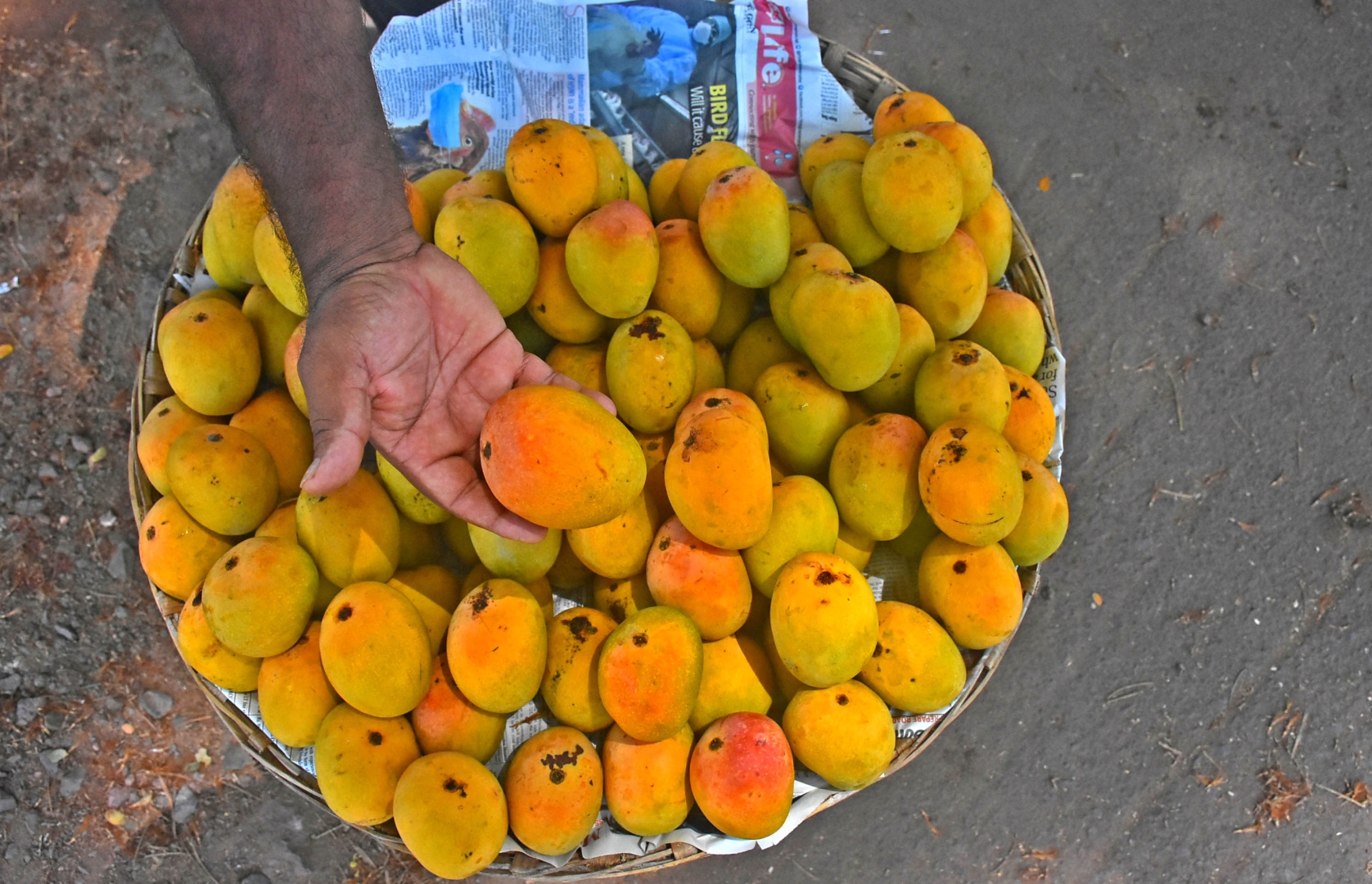According to historical records, the Portuguese arrival in Goa in 1510 cemented the mango's position as India's undisputed king of fruits

Narayan Pissurlenkar
The word mango originated in the sixteenth century from the Portuguese word manga, the Malay ‘mangga,’ and the Tamil ‘man.’ Mangifera indica is the scientific name for an Indian plant that produces mangoes. Other mangoes come from the region that straddles northeastern India, Bangladesh, and northwest Myanmar.
The mango fruit has long been a part of Indian myth, culture, and history before the arrival of the Portuguese. Mangoes are mentioned in the Ramayana, Mahabharata, and the earliest Buddhist and Jain literature. Still, according to historical records, the Portuguese arrival in Goa in 1510 cemented the mango's position as India's undisputed king of fruits. Mangoes are superior to all the fruits of Spain (i.e., Europe), according to the exceptional Colóquios dos simples e drogas da India written in 1563 by Portuguese Renaissance Sephardic Jewish physician and pharmacognosy pioneer Garcia da Orta.
Mangoes from Goa were recognized as a crucial diplomatic instrument by the Portuguese. All of the Deccan kingdoms valued crates of Alphonso mangoes as a kind of tribute, but the Maratha court cherished them beyond all others. To maintain the rarity and value of the Estado da India Portuguesa's stock of Goan fruit and maintain the fruit's legendary allure, the Portuguese ambassador to Pune at the time, Vithalrao Valaulikar, wrote to the Governor of Goa in 1792, advising strict restrictions on mango imports to the territories that are now part of Maharashtra. Not long after, the Peshwas began to plant millions of Alphonso mango grafts from Goa throughout the Konkan after developing their mango ambitions. The hybrid offspring of these fruits are now known as Hapoos and have taken over India and the rest of the world.
The Estado da India's economy was booming by the end of the sixteenth century thanks to its massive mango exports to the rest of India. This was made possible by the Jesuits, who created more than 100 varieties of mangoes and invented scientific grafting methods in the sixteenth century. After only a few decades of this infusion of European ideas, the trial's outcomes had gained praise, treasure, and celebration everywhere they had spread.
Several unusual varietal names came into existence as the practice of grafting spread among the locals, each striving to outdo the other. These names were based on the surnames of powerful families, landowners, kings, or even saints. The 'Hilario' (often referred to as Manghilar/Mangilar), another famous variety after Mancurad, is named after its grafter Hilario Fernandes of Siolim, Bardez. At the same time, the 'Xavier' is named after St Francis Xavier, the patron saint of Goa.
One of the most sought-after mango types in Goa is the Mankurado/Malcurada (Portuguese named it Malcorado, which meant poor-coloured). Having a mankurado tree in the yard is a source of pride for the homeowner. The mango is fleshy, but it also has a lot of fibre. Over the years, the Alphonso mango has inspired a worldwide fascination, especially the Devgad and Ratnagiri varieties, whose smooth, creamy flesh is the foundation for numerous products made from mango pulp. Alphonso, which takes its name from a Portuguese general named Afonso de Albuquerque, has a sweet, creamy flavour; a smooth, juicy pulp; and a distinct aroma that makes it stand out from the other varieties.
The Monserrate de Bardez originated in the Bardez taluka, is used for mango jam or Mangaad/Mangada, and is used in some processed food products. The Fernandin Mango variety, which originated in Bombay and is grown in Goa, resists spoilage from fruit flies and severe rains. It is the only mango with consistently more pulp than the others. The Malgesh/Malgueso mango, which ripens about the same time as the Mankurad, is ideal for producing mango chutney or sweet pickles. Additional Malgesh varieties include Khand Malgesh, which has thick skin and is of lower quality, and Akno Malgesh, which is of higher quality.
Fernando do Rego describes over 100 different species of Goan mangoes in his book "As Mangas de Goa" or "The Mangoes of Goa," although some may have vanished in recent years. Goa is now home to about 82 different mango types, which the Indian Council of Agricultural Research maintains as germplasm. Mankurad variants include the Costa, Gawas, and Amaral varieties. The Cardozo Mankurad has been registered after Dr Armando Batista Cardoz of Mapusa.
Mango delicacy
Green mangoes are pickled in brine with green chillies, ginger, bibe, or cashews using the mango variety "chepnnechim toran." When ready, it is stored for eating after being squeezed for days beneath a large stone. 'Bhorleli toran' can be made with masala and ‘chepnnechim toran’ as well. They are both enjoyed with pez (kanji). Green mangoes are used to make mango solan after they have been peeled, sliced, and dried with sea salt. Preferred during the rains, "Miskut," or pickle, is consumed with rice and dry prawn curry. It is produced from the flavorful "Koler" mango, often picked in May. 'Arroz Coco' is a cuisine that is served on Sundays during mango season and consists of rice cooked with coconut extract, saffron, and whole spices, including cloves, cardamom, and cinnamon and served with ripe, chewy 'Gota' variety mangoes. 'Gota' is also used to make 'Sansav,' a sweet-and-sour curry that is eaten with steamed rice.